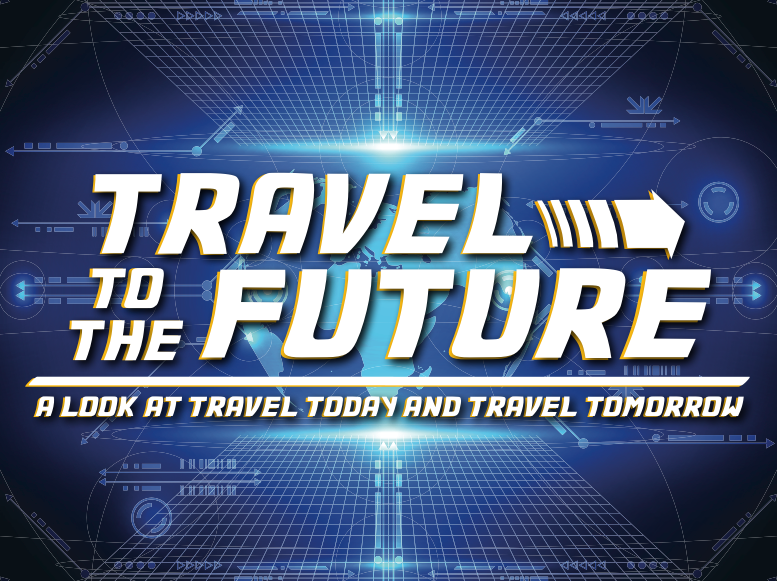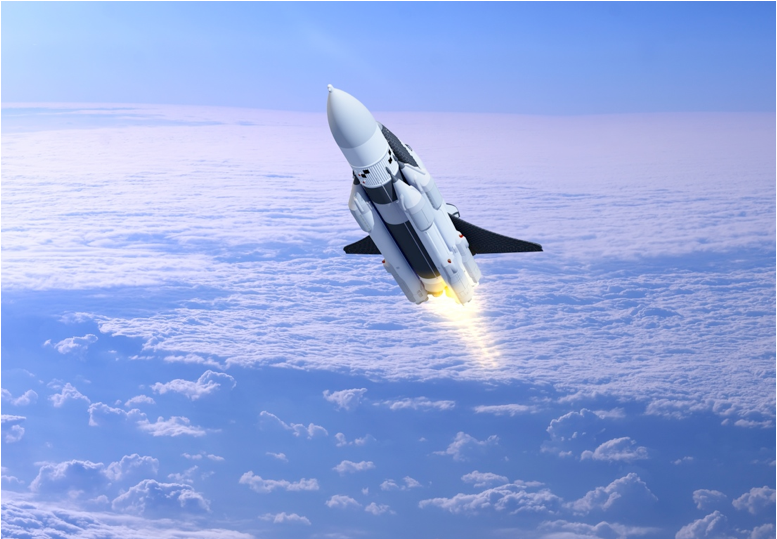
This article is part of #Future, a new UPROXX section that covers where the world is headed and how things have changed since 1989. Powered by Toyota.
It’s never been easy to predict the future. In 1989’s Back to the Future Part II, screenwriter Bob Gale envisioned 2015 with flying cars, soaring hoverboards, and fax machines on every corner. His predictions were hit and miss — yes, there is a hoverboard that can glide about an inch off the ground, but the fax machine died when the world went digital. While flying cars are noticeably absent from the skies, the vehicles that Doc Brown and Marty loved so much are closer than you might think.
The Toyota Back to the Future partnership is proof that the very human impulse to dream huge is one thing that hasn’t changed since 1989. The predictions and hopes we have in 2015 for our own distant future, are bigger and bolder than ever before.
Like the predictions made in Back to the Future, Part II, many of the ways our lives will change relate to how we travel. Not to go all Doc Brown, but the future of travel will completely alter how we relate to the environment, to other people, to time, and to distance. To get you prepared for the future, we’ve outlined glimpses of future travel that you can experience today, plus things for you to look forward to a little further down the space/time continuum.
**Stick around to the end of the article for an interview with two of the world’s leading futurists.**

Airports As Enjoyable Places
Historically, airports have not been places people are thrilled to spend their time, with many airports still failing to pass the why-the-heck-isn’t-this-better-by-now? test. Thankfully, innovation has begun to arrive — say goodbye to ’80s carpeted floors, claustrophobic hallways, and forgettable plastic-wrapped sandwiches.
Today’s newest airports and terminals are all about being bigger, brighter and more functional. They have to be. By 2033, the number of air passengers traveling through the world’s airports is expected to double (yes, double).
That’s why countries and cities are spending billions of dollars on improvements and entirely new airports that will not only be able to handle the increased number of travelers, but also become places that travelers feel relaxed, entertained, and excited to visit.
Among the airports leading the pack are London Heathrow, which unveiled its bright and airy $3.8 billion Terminal 2 in June 2014; Los Angeles International Airport’s international terminal, which completed a $1.9 billion renovation in late 2013 to include soaring ceilings, ample natural light, and more than 30 eateries; Dubai International Airport, which is in the midst of a $32 billion expansion so it can one day accommodate 200 million annual passengers; and Mexico City, which is building a new $9.2 billion airport set to open in 2020 and quadruple the previous airport’s passenger capacity.
Environmental and “Last Chance” Tourism Is Booming

Today more than ever, natural wonders and natural habitats are travel attractions. In the past several years, seeing a glacier has become more of bucket list item than seeing the Eiffel Tower. That’s pretty crazy to think about — because that’s certainly not how your parents or grandparents thought about travel.
It’s only natural for humans to want to experience nature and doing so has always been a part of the travel experience. In 2015, travelers aren’t as motivated to be the first to see something, it’s often more about making sure to see the thing before it disappears, like Marty’s hand midway through “Earth Angel.”
Whether it’s a glacier, the rain forest, or a tiger in its natural habitat, travelers of today (and of the future) want to see things with their own eyes before they vanish (that is of course, unless we prevent that from happening). This desire to experience the world’s wild corners can be a part of the solution, as environmental travel to protected areas with a responsible tour provider can help keep wild spaces safe. If people are interested in seeing these places and use their tourism dollars infuse to local economy, then city, state and country governments will be more inclined to preserve them.
And consider this: By 2050, it’s estimated that two-thirds of the world’s population will live in cities (and by 2050, the global population is estimated to reach 9.6 billion people). That means experiencing nature, and the peace and quiet that comes with it, will be even more desirable to travelers in the decades to come.
Jet Engine Advancements
While the future holds some world-altering aviation advancements (see “Airplanes Go Supersonic” below), recent steps in jet engine technology provide a solid the-future-is-now win for modern-day travelers.
The newest and most buzzed-about jet engine out there right now is the LEAP jet engine from GE — the world’s first passenger jet engine made with 3D printed nozzles (human hands are literally incapable of making these nozzles).
Although the LEAP engine won’t go into service until 2016, when it does, it’s going to be a game changer. Will it get you to your destination in half the time? No. But compared to other jet engines, it offers a 15 percent reduction in fuel consumption, a 50 percent reduction in emissions, and a 75 percent reduction in noise. That’s a big deal.
While airlines, of course, are thrilled (saving fuel = saving money), it’s the environment that really wins (less fuel and less emissions = a happy planet). Now consider the fact that it’s only been 64 years since the first test flight of a plane with a rudimentary jet engine. Pretty impressive.
The Smart Hotel Revolution Has Begun
While today’s hotels may not be filled with the futuristic services and amenities that we might have hoped for back in 1989, select hotels are giving us a glimpse into what future hotel visits will be like. In the future, hotels will all be about personalization and wellness.
Helping guests make their stays more personal, each room at The Peninsula Hong Kong features a tablet which allows guests to control the temperature, lights, curtains, order dinner, and make spa reservations. And Conrad hotels, a luxury brand from Hilton, has a concierge app that lets guests select the bath amenities they’d like in their room before arriving.
Perhaps the best taste of futuristic hotel stays, at least when it comes to wellness, can be had in the Stay Well rooms at the MGM Grand in Las Vegas. Here, rooms feature shower water infused with vitamin C, air-purifying filters with aromatherapy infusions, advanced lighting systems that assist in the regulation of melatonin production for better sleep, wake-up light therapy to help reverse the effects of jet lag and more.
There’s a lot still to come too, like retinal door entry (forget that flimsy key card), holographic in-room personal trainers, and interactive walls that display family photos and your favorite artwork.

Automated Driving Is Coming
Who wouldn’t want to sit down in their car, input a destination, and sit back and take a nap, or read, or work? You’d be crazy not to dream about it — although the idea of letting your car take over is one that will take a lot of getting used to.
Start preparing yourself now, because self-driving cars are already a reality, and one day, they will be the norm. Before our cars take us from door to door all on their own, we’ll learn to ease into the future by letting our cars take over certain types of driving, like highway driving, or shuttling us from one city to the next.
The technology exists and is been proven on real highways by Toyota, who recently unveiled their Highway Teammate automated-driving technology and said they’ve been researching and developing such systems since the 1990s. In testing, the Highway Teammate vehicle, a modified Lexus, merged onto Tokyo’s Shuto Expressway, switched lanes, moved around other cars and exited the expressway all on its own (video here).
By 2020, technologies like the Highway Teammate will be ready to launch. Toyota’s working on more cool things too…and you don’t have to wait nearly as long (here’s a hint).
Planes Go Supersonic, And Get Way Cooler Too
Jan. 1, 1914. That’s the date of the first-ever scheduled flight with a paying passenger. It was a 23-minute trip across Florida’s Tampa Bay that otherwise would have taken 11 hours by train and there was one passenger on board who sat next to the pilot.
In the almost 102 years since, commercial airlines have served more than 65 billion passengers — the same number of passengers who are expected to fly in the next 15 years alone.By 2030, there will be an extra billion people in the world, and 20 percent of them will be traveling (that’s 1.8 billion people traveling around the world each year). With a drastically changing population, and more people needing to go more places, airplane-makers will have no choice but to evolve.
Aesthetically, it’s Airbus and their concept cabin that is drawing the most excitement for the future of air travel. With its bionic structure covered in a biopolymer membrane, the walls of the plane could be turned transparent with the wave of a hand and allow for a 360-degree view of the world outside. Holographic images will highlight and provide information on points of interest (like the mountain peak or skyline in the distance) and transform the walls of private cabins into any scene of the passenger’s choosing. Seats will morph to fit passenger body shapes, clean and repair themselves and collect passenger body heat to power cabin facilities — a huge upgrade from the hard and narrow seats found on airplanes today.
When it comes to speed, the near future is all about NASA and Lockheed Martin’s N+2 Supersonic Passenger Jet. Built to reduce travel time by 50 percent, the 80-passenger N+2 will be able to travel at mach 1.7 (that’s 1.7 times the speed of sound, or over 1,300 mph) and cover 5,000 nautical miles. The only issue with planes that fly this fast is the extremely loud sonic boom they create when traveling faster than the speed of sound. That’s why NASA is on board to help Lockheed Martin figure out how to quiet the boom — which they say will be 100 times quieter than the Concorde (the famous yet troubled supersonic plane that flew transatlantic flights from 1976 to 2003). If all goes well, the N+2 is expected to hit the market in 2025.
Security Checks Will Change Completely

While the size, design and functionality of future airports might sound impressive (see “Airports As Enjoyable Places” above), it’s the future of airport security that’ll truly blow your mind.
Standing in long lines at security, taking off your shoes, jacket and belt, removing your laptop and toiletries, then putting your arms above your head in an X-ray machine while sending your bag through a little tunnel will all seem absurd in the airports of tomorrow.
Replacing the technologies of today will be laser molecular body scanners, which will be able to scan both passengers and their bags in less than a second to detect even the most minute traces of dangerous materials like explosives or drugs. This technology won’t require travelers to queue up one by one either — it can scan large groups of travelers all at once from 160 feet away.
Retinal scans, facial-recognition software and thermal lie-detection cameras are on the way too. These devices will not only be able to identify wanted individuals in a split-second, but also recognize and flag suspicious face and body movements (like extreme stress — be it from a child in danger or a traveler carrying contraband).
While it may be a few more years before some of this technology is implemented in airports, a glimpse of futuristic airport security can already be seen at South Korea’s Incheon Airport, where a pack of the airport’s drug and ammunition sniffing dogs are genetically identical clones of a Golden retriever named Chase who was particularly good at his job.
The Hyperloop Will Replace Trains
It’s one of the most imagined scenes of the future: people being sucked through an elevated tube at ultra-high speeds, zooming from one destination to another. Well, this futuristic piece of infrastructure is real (almost), it’s called the Hyperloop, and it’s going to change travel as we know it.
Traveling at speeds close to 800 mph, this land-based form of transit could take travelers from Los Angeles to San Francisco in 30 minutes. Say goodbye to “bullet trains” — the Hyperloop is 433 percent faster.
Ever since Elon Musk, founder of SpaceX and Tesla Motors, got behind the Hyperloop, the science-fiction idea has been on its way to becoming a reality. While Musk and SpaceX aren’t building their own commercial Hyperloop, they are “interested in helping to accelerate development of a functional Hyperloop prototype,” according to the company’s website. It’s not just talk, either. Space X recently announced that they are building a 1-mile long Hyperloop test track at their Space X facility in California and have launched a competition for teams to develop the best Hyperloop human-carrying pod prototype.
Space Travel

When we think about space travel, our minds tend to wander to weekend trips to the Moon or Mars. While satellite condos orbiting the earth are more likely, space travel of the near and distant future is really all about two things: tourism and point-to-point spaceflight.
First, and most often discussed today, is space tourism — trips into space for no other purpose than to gaze at the stars, see the curvature of the Earth, take an Instagram photo, and come back down. And it may just be two more years before you can do it… if you have $75,000 to spare. In 2017, World View, a space-tourism company based in Arizona, is hoping to send its first customers to the edge of space (100,000 feet) via a capsule attached to a giant balloon (no rockets needed).
More widely known is Sir Richard Branson’s futuristic rocket-ship company, Virgin Galactic, which despite the tragic crash of its SpaceShipTwo test flight in 2014, is moving forward full steam ahead. For Virgin Galactic, flying rich tourists into space isn’t the end goal. The future’s most exciting use of space travel, or at least the most practical, is point-to-point suborbital spaceflight. Imagine getting from London to Singapore or from Los Angeles to Tokyo in one hour. Theoretically, it’s possible — but it involves launching into space and the coming back down to earth at your destination.
And while the tech might not be fully baked just yet, the country is clearly ready: There are already nine spaceports in North America and a 10th is on its way.
BONUS MATERIAL: Interviews with Two Futurists

Now that you have an idea for what the future of travel might be like, let’s ask two of the world’s leading futurists — as in professionals whose job it is to study and make predictions about the future — what they think.
About The Futurists:
Dr. James Canton — Dr. Canton is CEO and chairman of the Institute For Global Futures, a think tank that advises business and government on future trends, and author of the new book Future Smart: Managing the Game-Changing Trends that Will Transform Your World. A social scientist and former Apple computer executive and high-tech entrepreneur, Dr. Canton has advised three White House administrations and top companies like Boeing, FedEx and IMB.
Daniel Burrus — Daniel Burrus is founder and CEO of research and consulting firm Burrus Research, a technology entrepreneur and author of six books, including The New York Times and The Wall Street Journal best-seller Flash Foresight: How To See The Invisible And Do The Impossible. As a strategic adviser to executives of Fortune 500 companies, Burrus has worked with the likes of GE, American Express, Google, and other future-thinking companies.
Q: When it comes to the future of travel, what are you personally most excited about?
For Dr. Canton, it’s space-station condos orbiting the Earth and extreme telerobotics (which involves sending your robot surrogate on extreme trips, to say, climb Everest, and experiencing it all through virtual reality, or even shared consciousness, from the comfort of your home). And although he’s not excited about it, Canton also predicts an increased emphasis on safe and secure travel in a world that will be increasingly filled with chaos and uncertainty.
For Daniel Burrus, it’s a curveball response — “global competition.” But not competition between nations; competition between companies. Why? Because increased competition means companies must raise the bar in terms of their product offerings and service to win customers. It’s not all business, though. Burrus is also looking forward to a future where technology makes communication easier — for example, being able to wear a tiny device in your ear that’ll translate foreign languages instantaneously.
Take a listen below:
Q: What do you think has the most potential to change how people travel in the next 10 years?
Burrus’s prediction — one that is not often thought of although it’s hiding in plain sight — is sure to really make you think. In speaking about the world’s most popular tourist attractions (Eiffel Tower, the Colosseum, landmarks throughout London and all of Manhattan, etc.), Burrus urges, “you better go now, because it’s going to get extremely crowded.” His reasoning is fascinating:
Q: What do you think has the most potential to change how people travel in the next 100 years?
Canton, an expert on the “extreme future,” is the man for the job when talking about what the world of travel will be like 100 years from now. One possibility? Uploading your consciousness to a cloud-based network that’ll allow you to experience flying a spaceship around Pluto or navigate the oceans on the back of a whale in a state of blended reality. In fact, in this interview, Canton coined a brand-new term for this future travel phenomemon, Upload Travel (you heard it here first). But this doesn’t mean your mind won’t need some training to handle these unbelievable experiences.
You’ll want to listen to this:
Q: The question on everyone’s mind is: When do you think the average American, not the billionaires and millionaires paying hundreds of thousands of dollars, will be able to go to space?
Between SpaceX sending rockets into space and Virgin Galactic selling seats in their still-struggling rocket ships for $250,000, we hear a lot about space travel — or more specifically, space tourism. But when can average Americans, those who don’t have an extra quarter-million on hand, expect to be in space?
Dr. Canton thinks it could be as soon as within the next 10 years, based simply on the laws of supply and demand. If demand is high, supply will rise to meet it and costs will equalize in order to compete (certain countries may subsidize their space tourism industry in order to offer better prices and pull ahead in the field).
Daniel Burrus, on the other hand, thinks we might see the dawn of more affordable space tourism in about 15 years. As for spending the weekend orbiting around the world in a space condos, Burrus thinks it’s certainly possible, though it’s sure take a while longer.
Start planning your first trip to space with this info:






